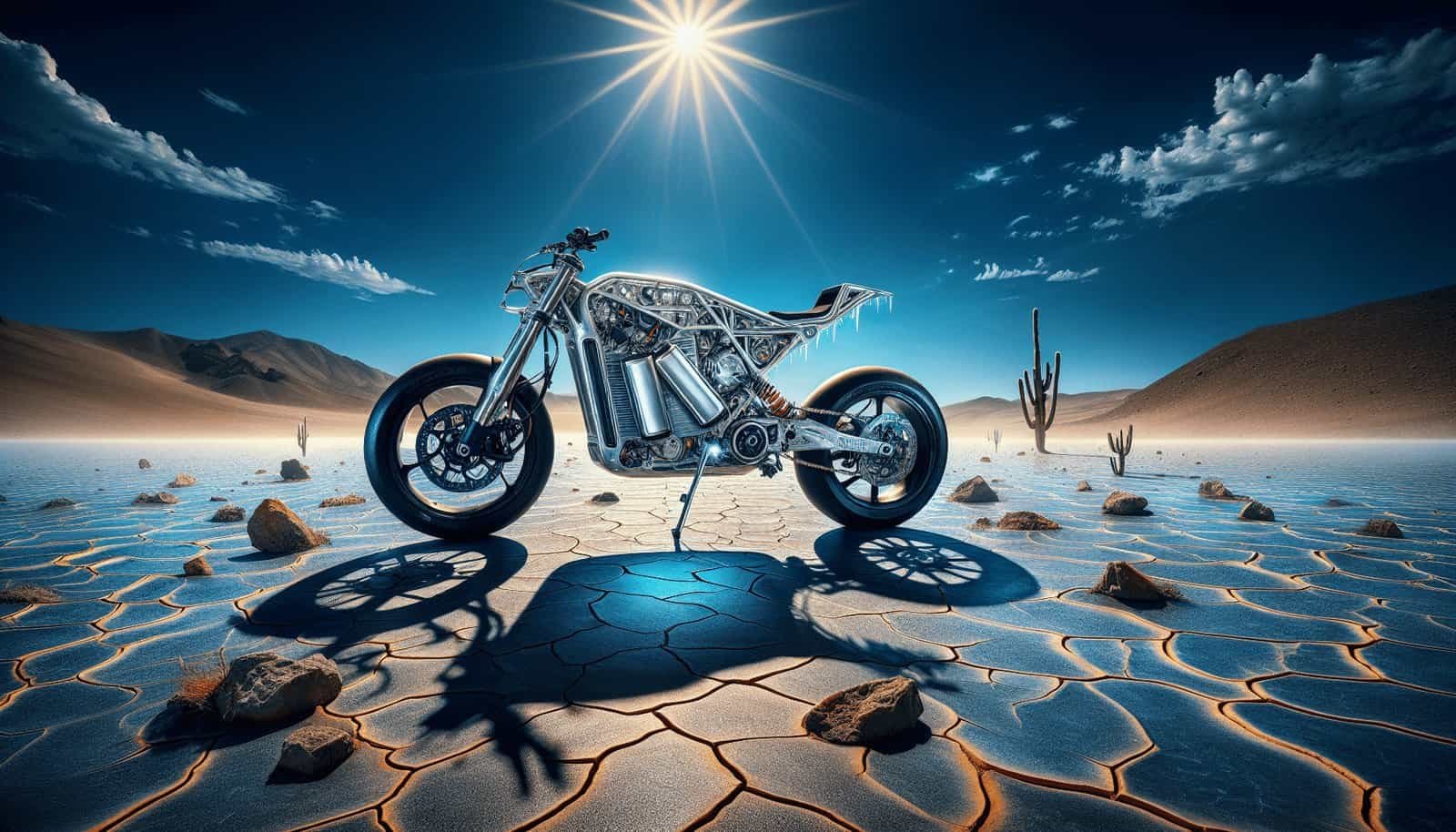Have you ever wondered how electric bikes perform in hot climates and whether overheating is something you need to worry about? If you’re living in an area that sees soaring temperatures or planning a cycling trip somewhere especially warm, these are questions that naturally come to mind. Electric bikes are gaining popularity for their convenience and eco-friendliness, but how well do they hold up when the mercury rises?
Understanding Electric Bikes
An electric bike, often referred to as an e-bike, combines the mechanics of a traditional bicycle with an electric motor. This setup offers a convenient and efficient way to travel, especially for those who need to tackle long distances or steep inclines. But what kind of components are susceptible to the rigors of a hotter climate?
Key Components
- Battery: The powerhouse of the e-bike, typically made of lithium-ion cells.
- Motor: Provides pedal assistance, often hub-mounted or mid-drive.
- Controller: The brain that manages how much power is sent from the battery to the motor.
These components have different tolerances for heat, and understanding these can make a world of difference in hot climates.
How Heat Affects Electric Bikes
Heat impacts various components of electric bikes in unique ways. To ensure that your e-bike operates efficiently in the heat, you need to be mindful of these effects.
Batteries in High Temperatures
Lithium-ion batteries are commonly used in e-bikes due to their high energy density and long lifespan. However, these batteries are sensitive to extreme temperatures.
| Temperature Range | Battery Performance Impact |
|---|---|
| 0-15°C (32-59°F) | Reduced capacity and efficiency |
| 15-35°C (59-95°F) | Optimal performance range |
| Above 35°C (95°F) | Risk of overheating and permanent damage |
In hot climates, exposure to high temperatures can significantly reduce the lifespan of your battery and, in extreme cases, cause it to overheat. Overheating can result in a decrease in efficiency or even battery failure.
Motors and Controllers
Electric motors and controllers are designed to handle certain operating conditions, but excessive heat can cause problems. Prolonged exposure to high temperatures can cause the motor to overheat, leading to weaker performance or potential failure.
- Motor: Frequent overheating can degrade the magnets and windings in the motor.
- Controller: Overheating can cause a decline in the electronic components’ performance.
Overall Performance
Extended exposure to high temperatures affects not only individual components but the overall performance of your e-bike. Range, speed, and the bike’s ability to handle inclines can all be compromised if the components are not functioning at their best.

Tips to Mitigate Overheating
While high temperatures can pose challenges, there are several strategies you can implement to ensure your e-bike functions optimally.
Battery Management
- Shade: When not in use, keep your e-bike in the shade to minimize direct sunlight exposure.
- Ventilation: Store and charge your battery in a well-ventilated area.
- Avoid Overcharging: Overcharging can generate excess heat, so unplug your battery once it is fully charged.
Riding Practices
- Timing: Ride during cooler parts of the day, like early mornings or late evenings.
- Breaks: Take breaks to allow the motor and battery to cool down.
- Moderation: Use pedal-assist modes wisely to prevent overworking the motor.
Maintenance for Hot Climates
Regular maintenance can make a significant difference in how your e-bike performs in hot climates. Paying attention to some crucial elements can ensure a long lifespan and reliable performance.
Battery Checks
Regularly check the battery for any signs of wear or damage. Ensuring that the battery is in good condition will help it handle high temperatures more effectively.
| Maintenance Task | Frequency |
|---|---|
| Inspect Battery | Monthly |
| Clean Battery Contacts | Every 3 months |
| Check for Firmware Updates | Annually |
Motor and Controller Inspections
Ensure that the motor and controller are clean and free of debris. Dust and grime can exacerbate overheating issues.
- Cleanliness: Wipe down the motor and controller with a soft cloth.
- Cooling: Check if there are any cooling fins or components and ensure they are functioning correctly.

Choosing the Right E-Bike for Hot Climates
Not all e-bikes are created equal, and some are better suited for hot climates than others. Choosing the right e-bike can make your experience much more enjoyable and hassle-free.
Battery Specifications
Opt for e-bikes with high-temperature tolerances. Some manufacturers design batteries explicitly meant for various climate conditions.
- Cooling Systems: Some batteries come with built-in cooling systems.
- Materials: Higher quality batteries often use better materials that can withstand heat.
Motor Design
Choose e-bikes with motors that are designed for efficiency and cooling in mind. Motors with adequate ventilation will perform better in hot climates.
- Ventilation: Motors with vented casings allow for better airflow.
- Efficiency Ratings: Look for higher efficiency ratings to ensure that the motor does not have to work as hard.
Pros and Cons of E-Bikes in Hot Climates
Just like any other mode of transportation, e-bikes have their set of advantages and disadvantages, especially in hot climates.
Pros
- Eco-Friendly: Zero emissions make them an environmentally friendly option.
- Efficient Travel: E-bikes offer a convenient mode of transportation that helps you cover longer distances with less effort.
- Cost-Effective: Over time, e-bikes can be more economical compared to cars and public transport.
Cons
- Overheating Risk: As discussed, the risk of overheating in batteries and motors is a significant concern in hot climates.
- Component Degradation: High temperatures can accelerate wear and tear on essential components.
- Maintenance Needs: Increased maintenance due to the added stress of heat on the system.

Common Myths and Misconceptions
Myth 1: E-Bikes Cannot Be Used in Hot Climates
While it’s true that e-bikes face challenges in hot climates, suggesting they are entirely unsuitable is misleading. Proper care, maintenance, and smart riding strategies can help you enjoy e-bikes even in the heat.
Myth 2: Overheating Only Happens in Extreme Heat
Overheating can occur even in moderate temperatures if the bike is overworked or not maintained correctly. Simple measures like taking breaks and riding during cooler parts of the day can help manage this risk.
Myth 3: All Batteries Are the Same
Battery quality and design vary significantly between manufacturers. Choosing high-quality batteries designed for durability and temperature tolerance can make a substantial difference.
Real-World Examples
Case Study 1: Urban Commuting in Dubai
Dubai’s hot climate is a unique challenge for any vehicle. However, several e-bike users report that with good practices like storing bikes in shaded areas and riding during cooler hours, they have managed to make their e-bikes work effectively even in the extreme heat.
Case Study 2: Weekend Riders in Southern California
Southern California residents often use e-bikes for their weekend getaways. The relatively high temperatures are manageable with proper care—users typically find that maintaining their bikes and planning their rides to avoid peak heat hours makes a big difference.

Industry Innovations
Manufacturers are increasingly focusing on designing e-bikes that are robust enough to handle extreme climates. Innovations include:
Enhanced Cooling Systems
Advancements in cooling systems for both batteries and motors are becoming more common. These systems help manage the internal temperatures of key components, thus extending their lifespan.
High-Temperature Tolerant Materials
New materials that are more resistant to heat are being developed. From battery casings to motor housings, these improvements can withstand higher temperatures without degrading.
Future Prospects
As technology continues to advance, the future looks promising for e-bikes in hot climates. Anticipated developments include:
- Smarter Controllers: These will better manage power distribution to prevent overheating.
- Advanced Battery Technology: Batteries that can handle higher temperatures without loss of efficiency.
- Integrated Cooling Systems: More e-bikes will come with built-in cooling mechanisms for battery and motor components.
Expert Opinions
Experts generally agree that while hot climates pose challenges for e-bikes, they are not insurmountable. Proper care, maintenance, and choosing the right bike can mitigate many issues.
Mechanical Engineers
Mechanical engineers emphasize the importance of proper ventilation and cooling systems. They recommend opting for e-bikes specifically designed with these features in mind if you live in a hot climate.
Battery Specialists
Battery specialists advise focusing on high-quality lithium-ion batteries with good thermal management systems. Regular checks and proper storage can significantly extend battery life, even in high temperatures.
Conclusion
So, how do electric bikes perform in hot climates, and is overheating a concern? The answer isn’t straightforward but largely hinges on how well you’re prepared and how you care for your e-bike. While heat undoubtedly presents challenges, they are manageable with the right knowledge and practices. By paying attention to the key components, engaging in regular maintenance, and making informed decisions about your riding habits and environmental conditions, you can enjoy the myriad benefits of e-bikes, even when it’s hot outside.
Owning an e-bike can be immensely rewarding, offering both practical and environmental benefits. Taking a few simple steps to protect your investment against the pitfalls of high temperatures ensures that you continue to enjoy your rides for years to come.

